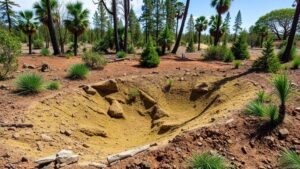Decoding Treasure Maps Using Historical Measurement Systems
Decoding Treasure Maps Using Historical Measurement Systems
Treasure maps have long captured the imaginations of adventurers and historians alike. They symbolize the journey into the unknown, often leading to untold riches and uncharted territories. But, decoding these maps requires not only a keen eye for detail but also an understanding of the historical measurement systems employed at the time of their creation. This article delves into the various measurement systems used in treasure maps throughout history, the methodologies for deciphering these intricacies, and real-world applications for modern treasure hunting.
The Importance of Measurement Systems
Understanding the measurement systems used in historical maps is crucial for accurate interpretation. Many treasure maps were created in eras where measurements could significantly differ from contemporary standards. Here are some common historical measurement systems that are often encountered:
- Imperial System: Originating in England, the Imperial system relies on units such as inches, feet, yards, and miles.
- Metric System: Used in most of the world, this system is based on units such as meters and kilometers and was adopted widely in the 18th century.
- Chain Measurement: Historically used in land surveying, this system involves measuring distances in chains and links, where one chain equals 66 feet.
- Rod Measurement: Also known as a perch, this unit equals 16.5 feet and was traditionally used in agriculture.
Understanding these systems is fundamental for interpreting treasure maps accurately. For example, if a map indicates a distance of three chains, and the reader uses a modern metric understanding, they might misinterpret the distance, leading them away from the treasure.
Decoding Techniques
Decoding a treasure map typically involves a series of steps that ensure clarity in measurement and location. These techniques can be applied by both historians and amateur treasure hunters:
- Contextual Analysis: Researching the historical context of the map is vital. Knowing when the map was created and the measurement systems in use during that time can provide insight into its contents.
- Conversion of Measurements: Once the system is identified, converting measurements to a consistent unit (e.g., metric or imperial) makes it easier to plot locations on modern maps.
- Landmarks Identification: Historical maps often refer to physical landmarks (such as trees or hills). Recognizing these landmarks requires geographical knowledge or further research.
For example, in the case of the famed treasure map attributed to Captain Kidd, many attempted to locate the treasure based on inaccurate assumptions of measurement. Careful analysis of the maps references to local topography, along with historical documentation, led some treasure hunters to successful finds.
Case Studies and Real-World Applications
A well-documented example of successfully decoding a treasure map involves the discovery of the U-boat Gold in 2015. Treasure hunters used a map created in 1945 that detailed the location of a sunken German U-boat carrying gold bars. By understanding the measurement system utilized at the time–specifically nautical miles–researchers were able to locate the treasure accurately after much speculation and calculation.
Similarly, the legendary Oak Island Mystery has drawn numerous explorers who interpret various maps and clues using outdated measurement systems. Historical analysis of the treasure pits on Oak Island required converting old survey measurements into modern standards to uncover the truth behind the mystery. Although no definitive treasure has been found, the ongoing research showcases the effectiveness of proper measurement interpretation.
Challenges in Decoding Treasure Maps
While decoding techniques provide a framework for interpretation, challenges remain. Some potential barriers include:
- Inaccurate or Faded Maps: Many historical maps have weathered time, leading to wear and tear that can obscure measurements.
- Varying Measurement Standards: Different regions may have employed unique measurement systems, causing confusion in interpretation.
- Loss of Historical Context: Important cultural and historical references may have been lost over time, complicating the decoding process.
Addressing these challenges requires a combination of interdisciplinary research, including history, geography, and archaeology, to piece together the clues left by the past. Collaboration among researchers across these fields can foster innovation and improve the accuracy of treasure hunting protocols.
Conclusion and Actionable Takeaways
Decoding treasure maps through historical measurement systems is a complex but rewarding endeavor. By understanding the measurement systems, employing effective decoding techniques, and being aware of potential challenges, enthusiasts can bridge the gap between past and present. For those involved in treasure hunting or historical exploration, the following actionable takeaways can initiate meaningful adventures:
- Research the historical context of a treasure map before initiating your search.
- Convert all measurements into a consistent system that aligns with your navigation tools.
- Collaborate with experts from various fields if faced with difficult challenges or uncertainties.
Such practices will not only enhance the likelihood of success in treasure hunting but also contribute to a deeper appreciation of the stories and histories held within these ancient artifacts.

